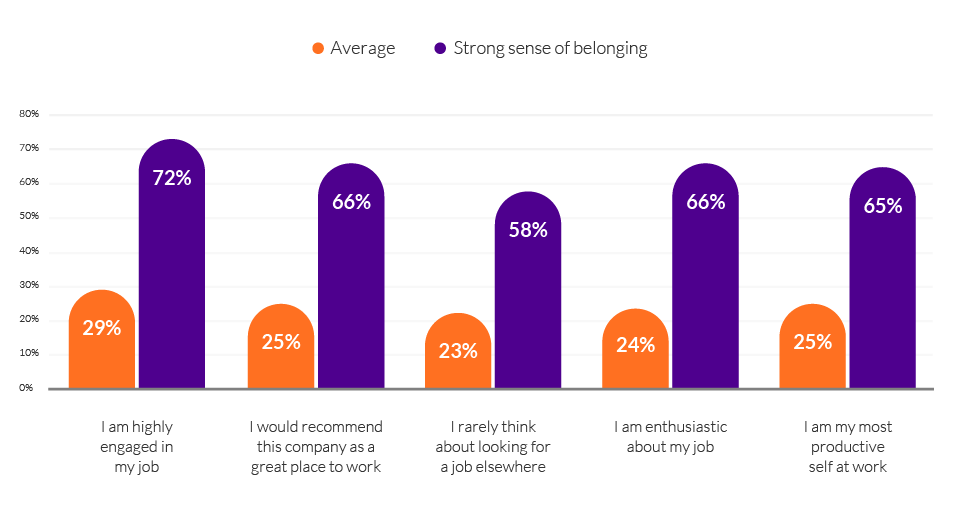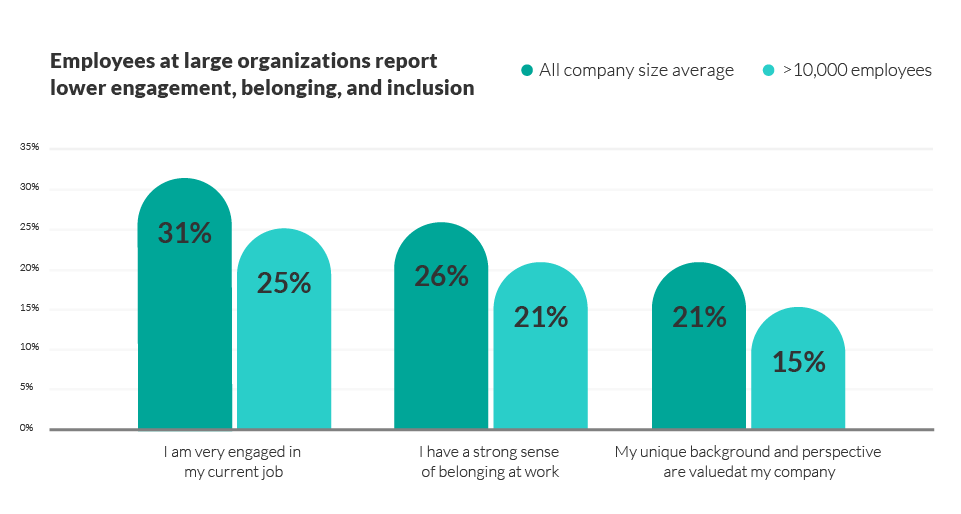Discover how large organisations are falling behind on employee engagement
Updated on February 7, 2023

This resource is brought to you by:
Topics Covered:
Employee engagement
The latest research on engagement and retention from Achievers Workforce Institute has a wake up call for leaders at large organisations — those with 10,000 or more employees.
Workers at these companies report significantly lower engagement, belonging, and inclusion.
Large employers must find a way to scale engagement and belonging efforts to retain top talent.
Large organisations are struggling to attract and retain
HR leaders from these large organisations are 75% more likely to say they’re struggling to retain and 40% more likely to say they’re struggling to attract employees, compared to smaller organisations.
This makes it even more important for large organisations to put programs in place to increase employee engagement and belonging, as both these traits correlate strongly with job commitment.
Why belonging matters
A strong sense of belonging at work is a critical predictor of positive employee outcomes, from engagement and job commitment to enthusiasm and productivity.

Achievers Workforce Institute identified five pillars of belonging, the key levers that business leaders can pull to increase employees’ sense of belonging at work.
What are the five pillars of belonging?
- Welcomed – introduced to, and incorporated within, the organisational culture and community
- Known – understood, motivated, and celebrated as an individual
- Included – valued and accepted without reservation
- Supported – consistently and meaningfully nurtured and developed
- Connected – developing and maintaining relationships across a diverse population
How can large organisations increase belonging at work?
Start by aligning organisational initiatives to the belonging model. What are you currently doing to ensure people feel welcomed, known, included, supported, and connected?
Next, focus on manager empowerment . An organisation with more than 10,000 employees can struggle to implement large programs quickly, but changes at the front line can have a large impact.
Thirdly, look for the low hanging fruit. AWI research has consistently shown that recognition frequency correlates strongly with sense of belonging at work. How can you increase recognition frequency for every employee on your team?
How to measure belonging at work
Measuring belonging is important because if you’re not tracking belonging levels it’s impossible to know if you’ve had the desired impact. AWI recommends incorporating a belonging question into your employee engagement survey such as:
How strong is your sense of belonging at work?
- Very Strong – I feel that I belong to my team and company
- Strong – I mostly feel that I belong
- Somewhat Strong – Sometimes I feel that I belong but often I don’t
- Not Very Strong – I rarely feel that I belong
- Not At All Strong – I never feel that I belong
Download the one pager now for four reasons engagement and belonging are lagging at large organisations

Join our mailing list
Stay up to date with the latest in workforce science from Achievers Workforce Institute.

